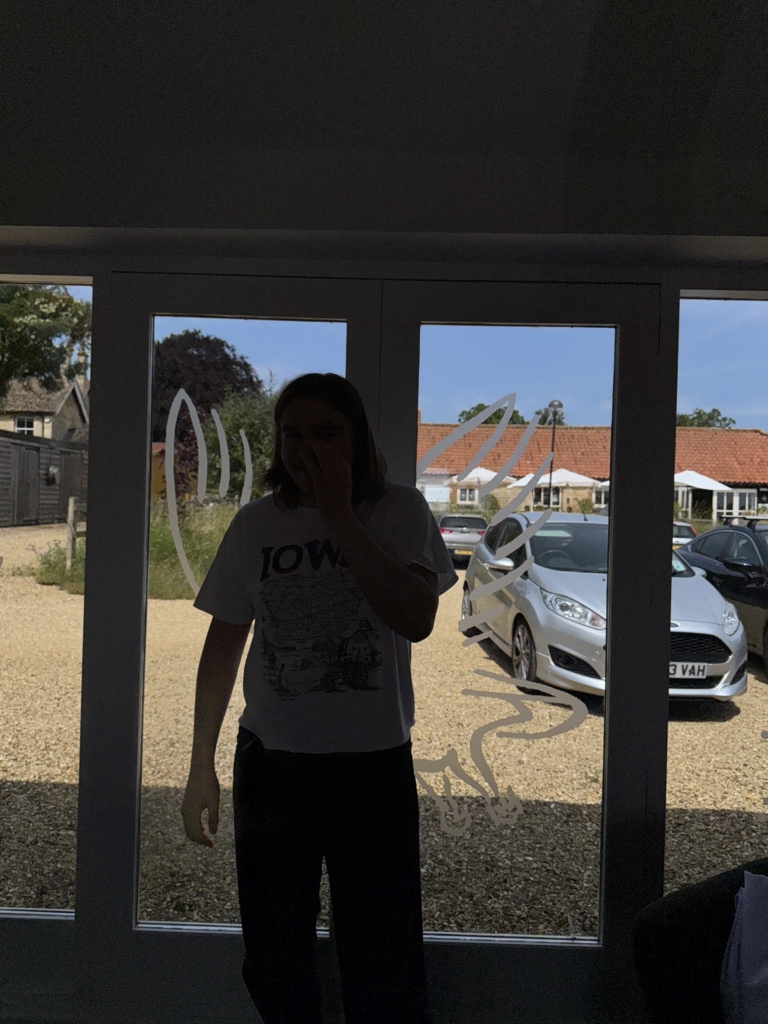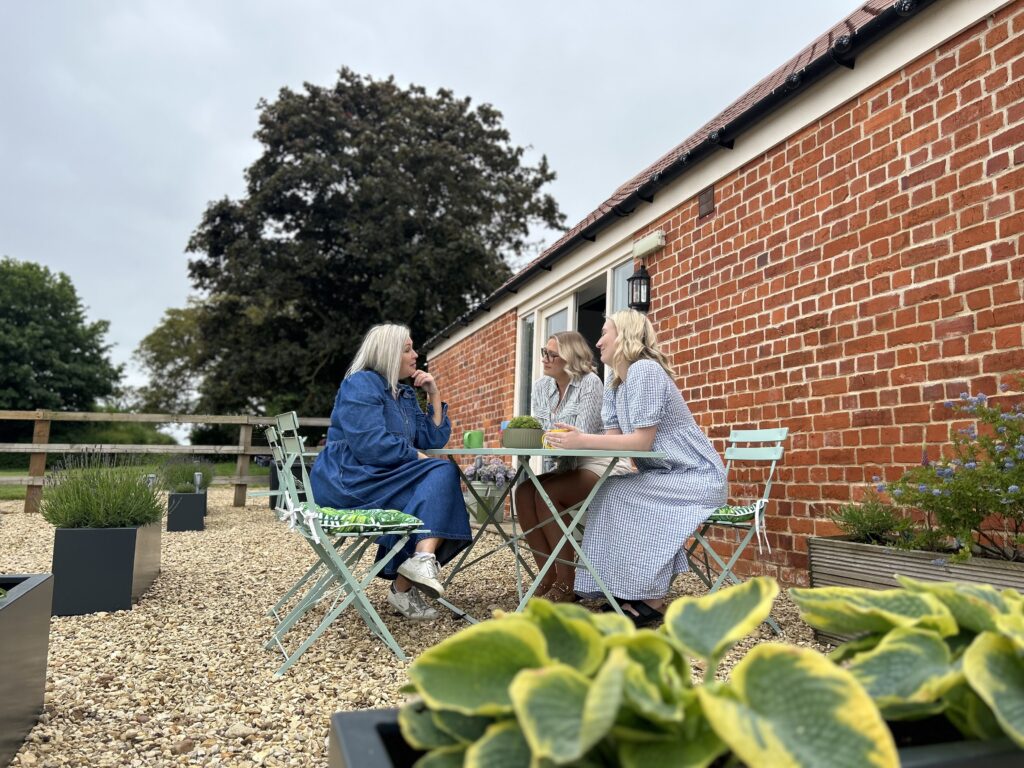The perfect photo doesn’t ex—
Capturing those perfect moments – whether it’s a student’s eyes lighting up after a brilliant achievement or the pure joy of a family picking up the keys to their dream home, is an important task! It can feel tricky to get it just right, whether you’re a seasoned pro or snapping a few photos for your social media feed.
Here’s the tea: You don’t have to take the perfect shot.
The good news is, great photography isn’t about owning the most expensive camera; it’s about understanding how to compose a shot, interact with your subjects, and present your images effectively.
In today’s age, where consumers are tired of beautifully polished Instagram pics and crave something more real. Sometimes, in the right context, showing real people in real moments can build trust and encourage your audience to truly connect with you.
The truth is, anyone can master the art of effective photo taking and we’re here with some essential dos and don’ts to help elevate your game!
Effective visual content like this is a cornerstone of strong digital marketing – particularly on social media. Learn more about our approach and how we could work with you to deliver meaningful impacts.
The Do’s of Photography
Getting it right from the start can save you a lot of time and effort. Here’s what to focus on:
1. DO ensure photo permissions
This is paramount! Always confirm that everyone in your photo has given their permission to be photographed – for example if you work in a school, it’s important to have clear, documented consent from parents or legal guardians, and where appropriate, from the pupils themselves.
2. DO apply the Rule of Thirds
Divide your image into nine equal sections by adding a 3×3 grid to your camera. Then, when you’re taking a photo, place your subject or key elements along these lines for a more balanced composition.
How do I add gridlines?
Head to settings, select ‘camera’ and then simply switch the toggle on ‘gridlines’ (it’s under composition).

3. DO use props wisely
Incorporate props to add context and help tell a story. Has your school received an Artsmark award? Did your customer share a heartfelt testimonial on their new home? Show off your certificate! Throw in some paintbrushes and palettes! Share a photo of the new homeowners with their new keys in front of a “sold” sign! They can make your photos more dynamic and informative.

4. DO get in close
Don’t be shy… frame your shots to be close to the action. Make sure you capture a good view that allows people to clearly see what’s happening and feel more connected to the subject.
5. DO prioritise frontal lighting
Position your subjects so that the main light source, ideally natural light, is in front of them. This illuminates their faces evenly, reduces harsh shadows, and creates a more flattering image.


6. DO check the background
Before you press the shutter, take a quick scan of your background. Distractions can ruin an otherwise great photo.
- Look for confidential or sensitive information: Pupil names? Display boards? Private documents?
- Tidy up: Overflowing bins, messy bags, or general clutter can detract from your main subject.
- Check uniform: If applicable, make sure uniforms are compliant (e.g. piercings, untucked shirts)
- Ensure all visible branding and logos are current: Outdated logos can make your content look old.

Background checks are crucial in lots of contexts – think media interviews and on-screen broadcasts. We offer comprehensive media training to ensure you deliver your message in a way that’s true to your authentic brand voice.
7. DO adopt a “reportage” style
Capture a mix of photos, with a selection of action shots. Encourage your subject to interact with something or someone in their environment, creating a natural and authentic image.

8. DO consider diversity and inclusion
Make a conscious effort to represent a diverse and inclusive range of people in your photography. This makes your content more relatable to everyone in your audience.
9. DO take multiple shots
Don’t rely on just one click. Take several photos to increase your chances of getting ‘the shot’. This accounts for blinks, awkward expressions, or slight movements.

The Don’ts of Photography
You can’t have good without bad! Avoiding these common pitfalls can improve the quality of your images.
1. DON’T take photos from a distance
Try not to take wide shots where your subjects are barely visible. Get closer to the action and fill the frame with what’s important.

2. DON’T over-edit or use excessive filters
Keep editing minimal and natural-looking. Avoid heavy filters or emojis to cover parts of the photo, as this can make the image look messy, unprofessional and dated.


3. DON’T crop out limbs awkwardly
Be mindful of your cropping. Avoid cutting off people’s hands, feet, or the tops of their heads in an unnatural or unflattering way.
4. DON’T use flash unnecessarily
Avoid using direct flash, specially indoors. It can create harsh shadows, red-eye, and unflattering, washed-out light. Natural light is almost always your best friend.

5. DON’T show illegible logos or banding
Always make sure any visible branding or logos in your photos are clear and easily identifiable. Blurry logos can make your organisation appear unprofessional.
By following these simple dos and don’ts, you’ll be well on your way to capturing compelling, professional, and effective photographs for your website and beyond.
Remember, these tips apply to everyone, whether you’re using a high-end professional camera or just your smartphone. iPhones can capture the greatest photos when you apply these fundamental principles!
On that note, have you noticed the comeback of ‘digi cams’? Those early 2000s shots are having their moment for sure, with Gen Z shutterbugs embracing the retro aesthetic a digital camera brings. But that’s a trend we’ll explore in another blog. Stay tuned!
While keeping up with every new ‘young’ trend and online slang can feel like a full-time job, our very own Clare had a go at unpicking their language and the fascinating world of ‘brain rot’ – read here. Or head to our news and insights page to get more views from the team.
And follow us on Instagram and LinkedIn to get a glimpse into our agency life and our work.
